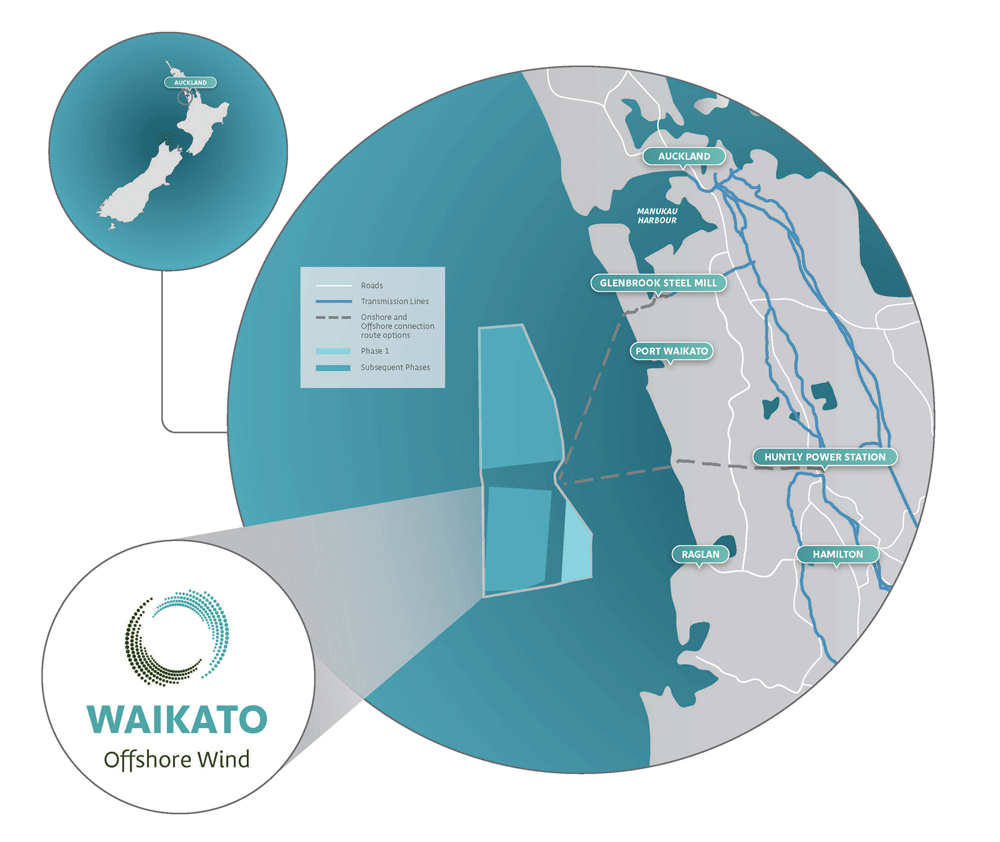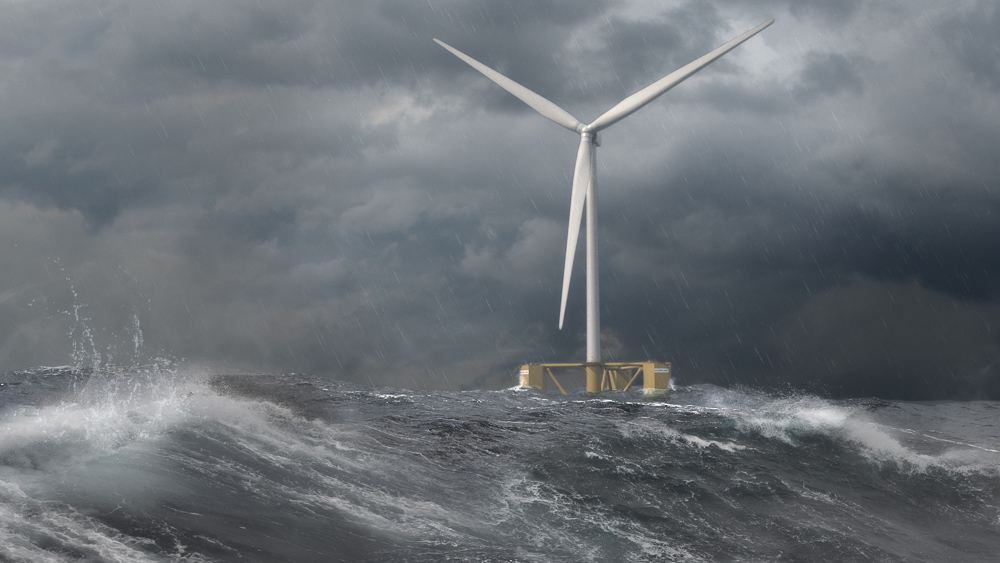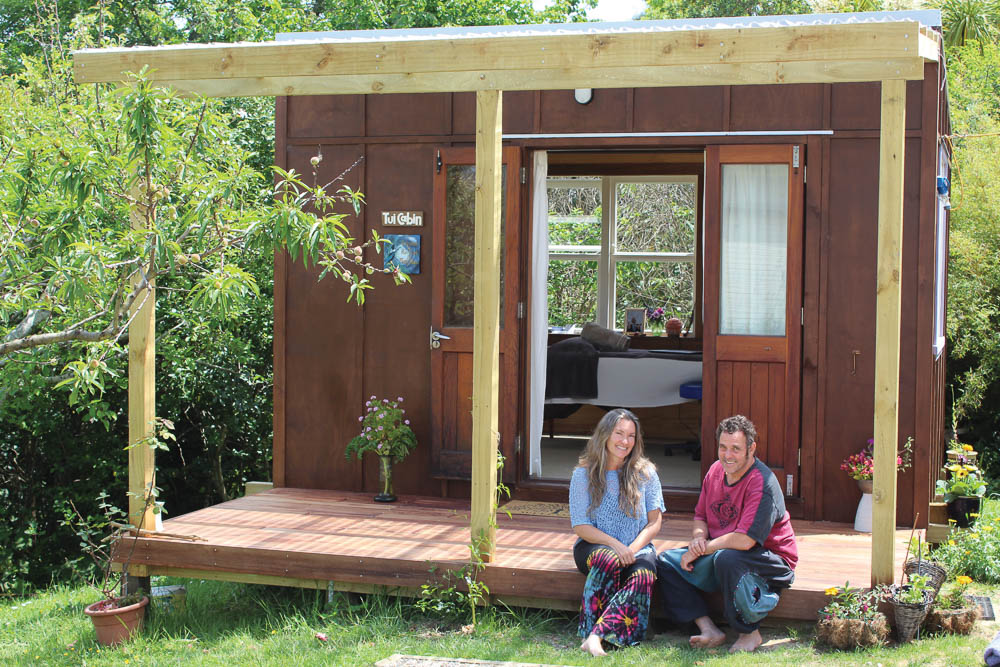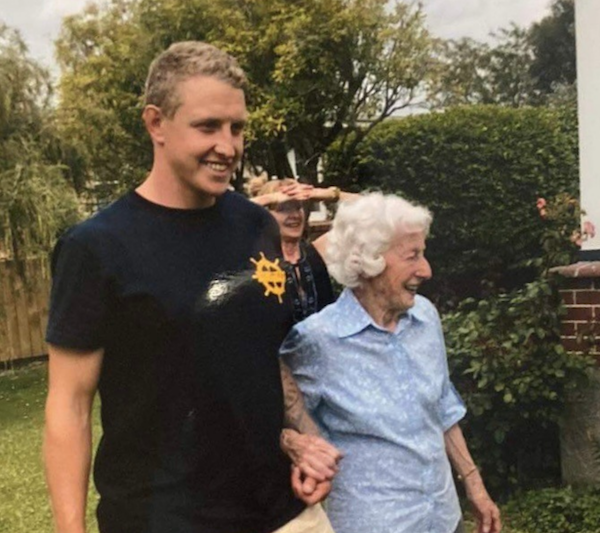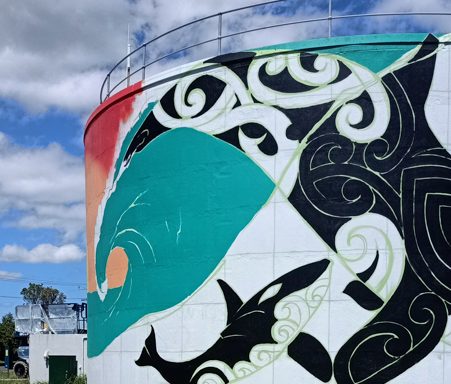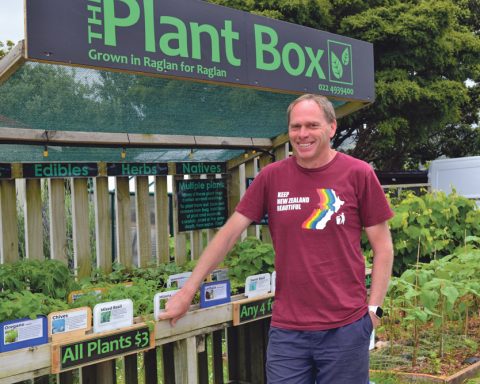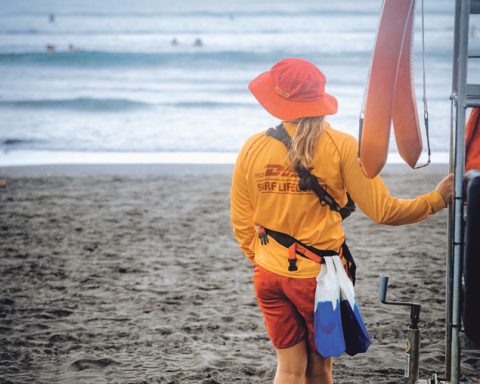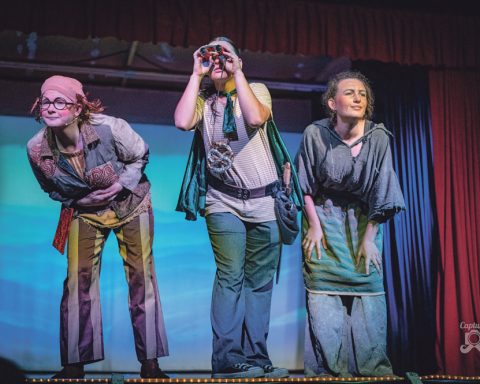At a press conference held earlier this month, international energy consortium formed by BlueFloat Energy, Energy Estate and Elemental Group announced plans to invest over $6 billion into developing an offshore wind farm off the coast of Raglan.
With the total area of the wind farm stretching from Glenbrook Steel Mill in the north to Raglan in the south, the South Auckland-Waikato offshore wind project is the second investment to be announced by the partnership in New Zealand as part of a nation-wide programme to develop up to 5GW of offshore wind.
The project, currently named Waikato Offshore Wind project, is intended to be developed in phases to generate capacity of up to 1.4 GW of power using both fixed and floating foundation technology and capable of powering around 700,000 homes.
Phase 1 of the project is expected to create about 250 megawatts of generating capacity using up to 20 turbines fixed directly to the sea floor – 22 kilometres off the Raglan coast. The initial phase would create around 300 jobs in construction, operations, and maintenance.
Options for Phase 2 use floating foundations and include the potential for an 800-1,150 MW development using up to 77 turbines positioned to the west or north of Phase 1. Conservatively Phase 2 will create an additional 800 jobs with the potential for additional jobs dependent on the size of the project.
The project is currently at the “feasibility stage” with construction hoped to commence some time before 2030 and the consortium expects the wind farm would take about three years to build.
The consortium say that the turbines will be visible from land on a clear day from certain vantage points and that a comprehensive landscape, visual landscape and visual impact assessment will be prepared as part of the environmental impact assessment.
In terms of impacts on the local fishing industry, Energy Estate co-founder Simon Currie said the consortium was clear the project could be done in a way that protected sea life and the wider marine environment. Currie added that the wind farms were expected to become a “commercial fishing no-go zone”, requiring negotiations with commercial and recreational fishers, and possible compensation.
The lifespan of these turbines is about 30-40 years after which time the turbine would either be decommissioned or refurbished.
Subject to further successful engagement with iwi and stakeholders and obtaining all necessary government and regulatory approvals the consortium hopes to see the first turbines in the water before the end of the decade.
For more information please visit: www.waikatooffshorewindproject.com
